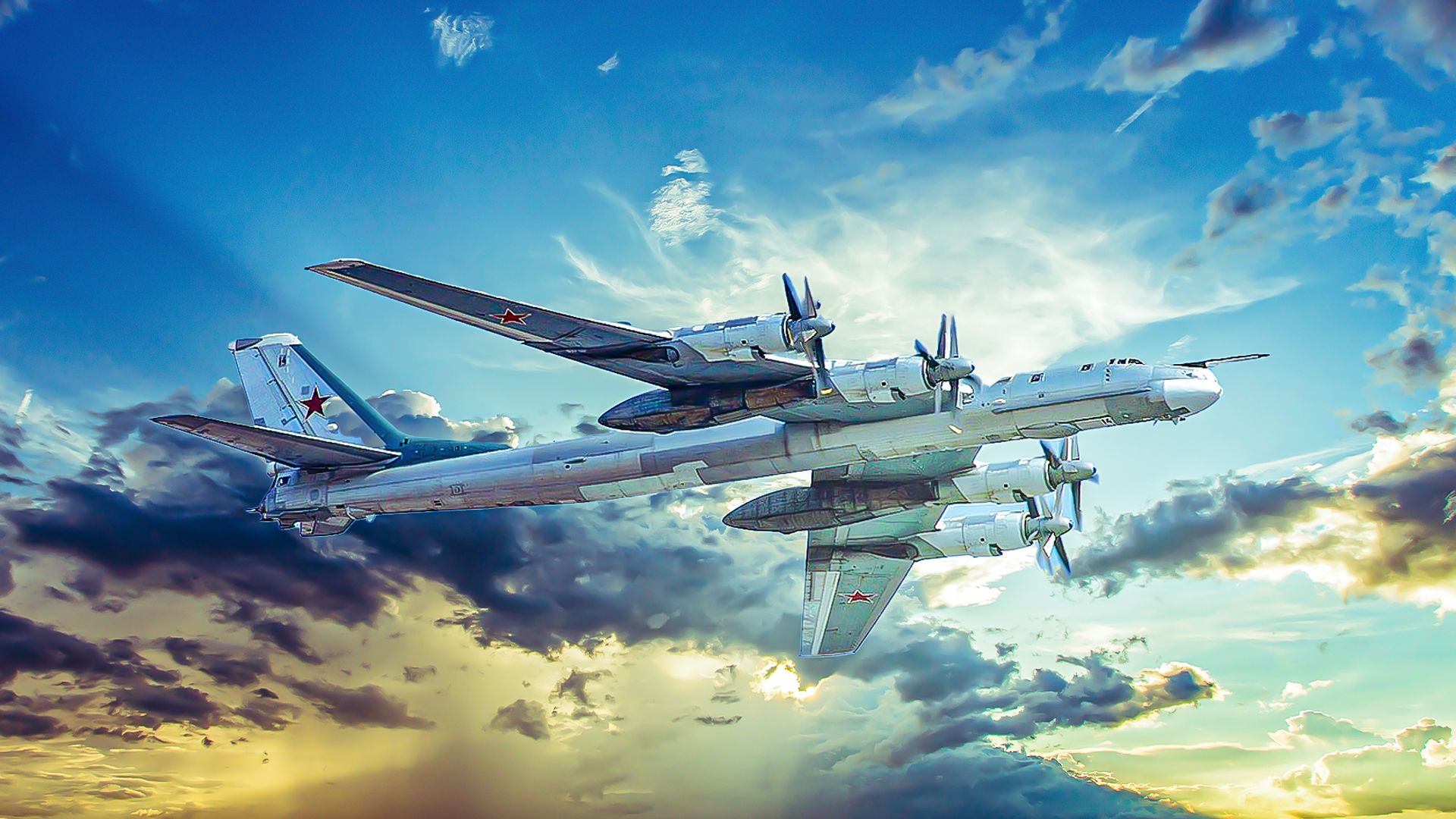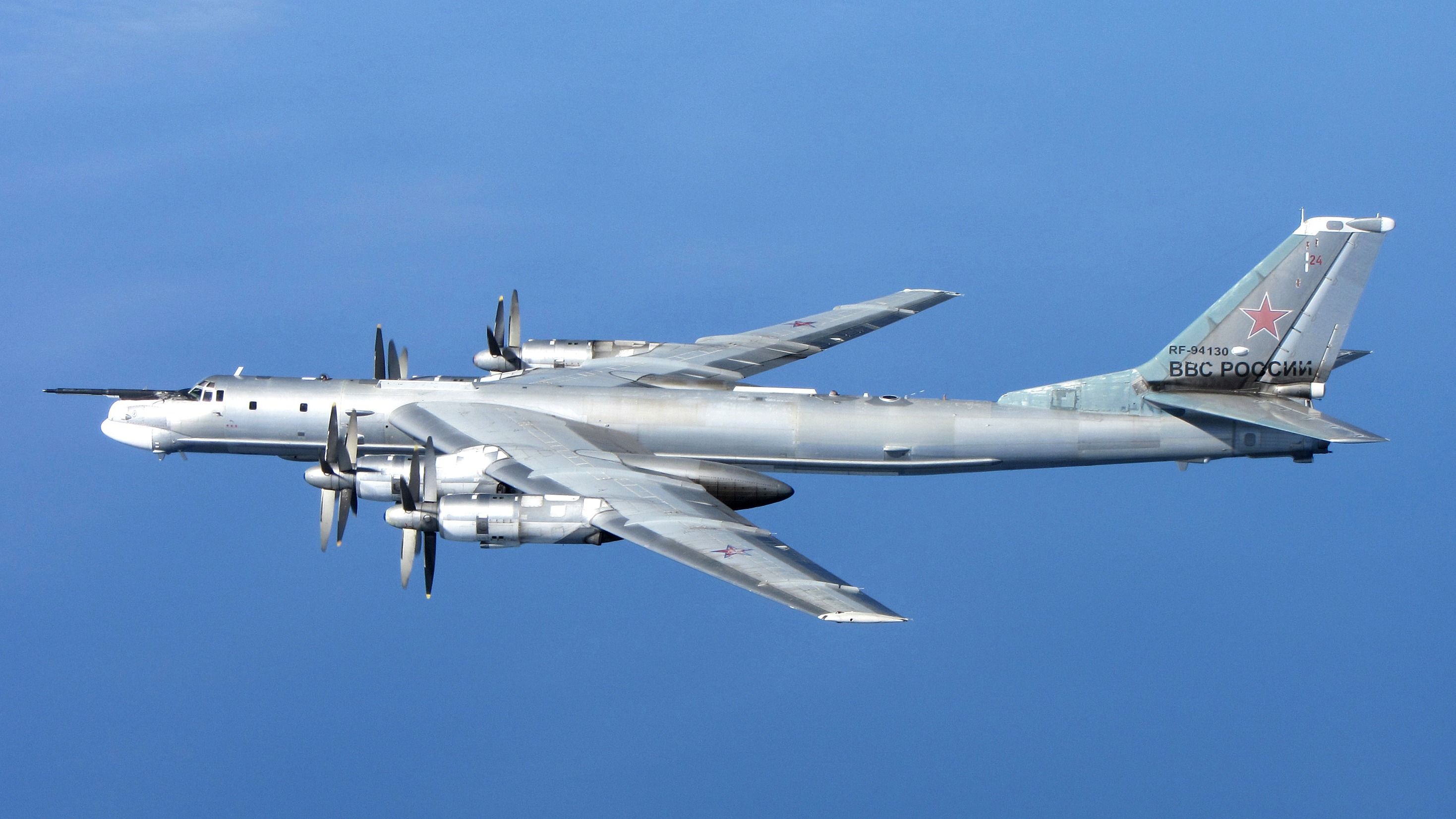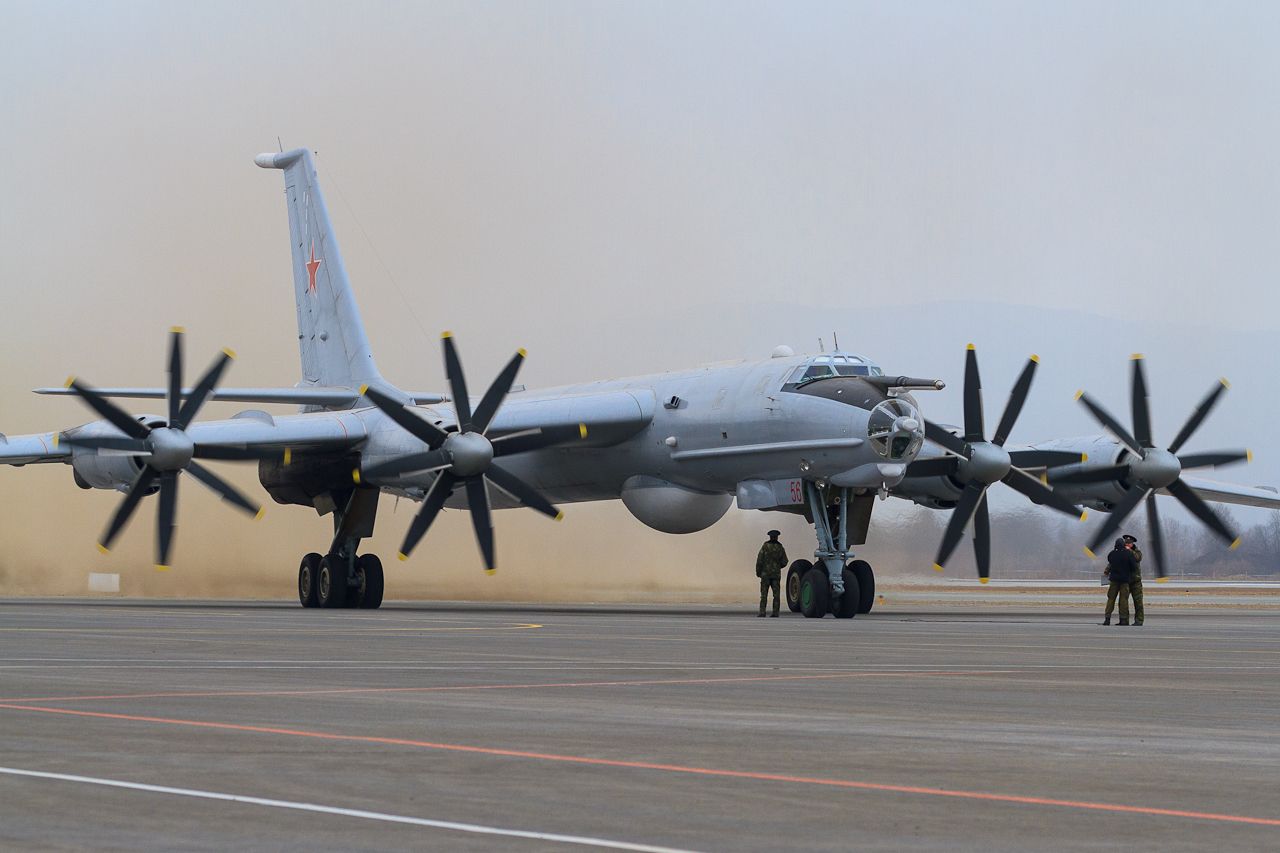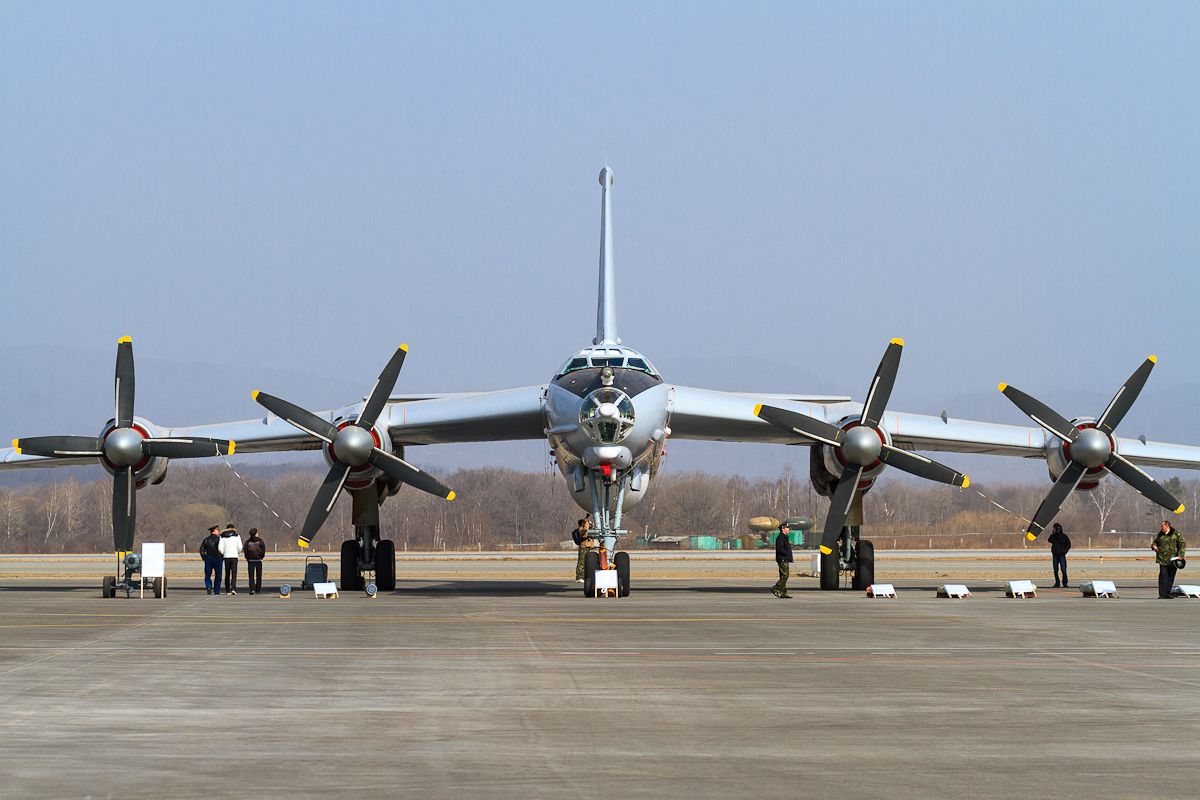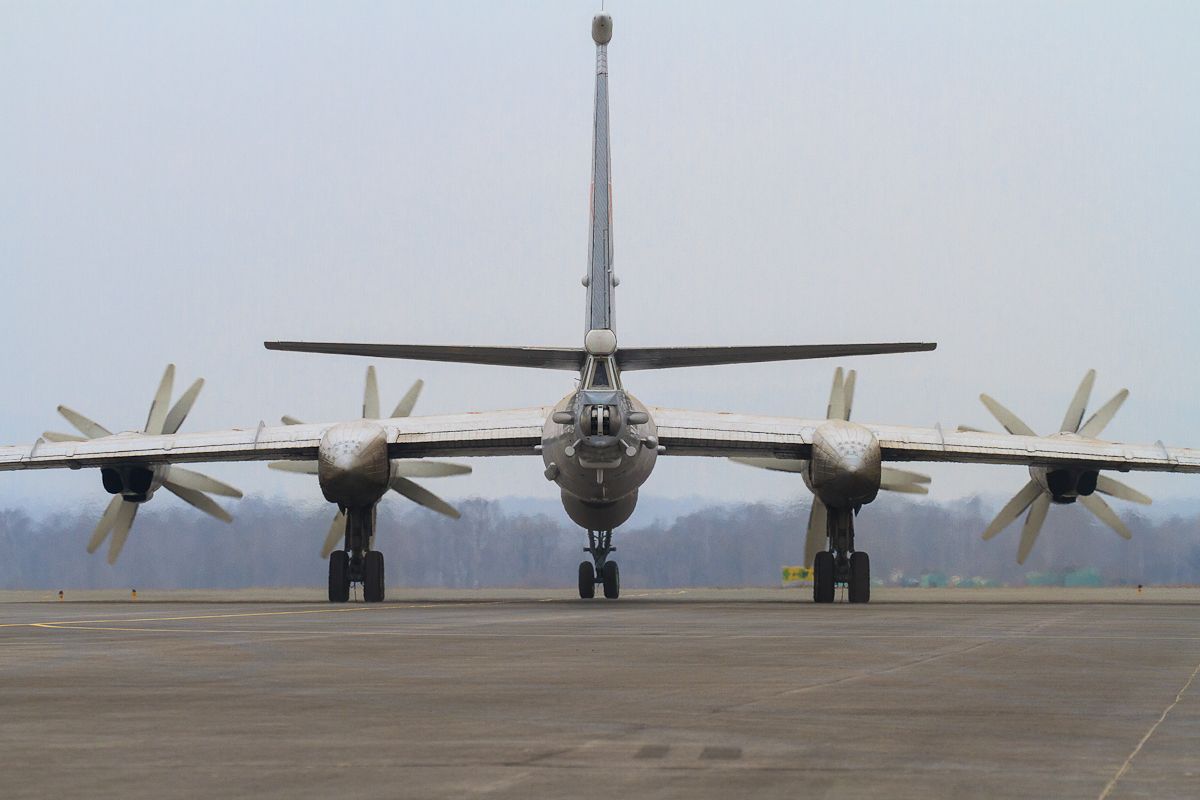The Tupolev Tu-95 is a quad-engine strategic bomber and missile-carrying aircraft developed by the Tupolev Group of the Soviet Union. The turboprop-powered bomber completed its first flight in November 1952 and entered service with Long-Range Aviation of the Soviet Air Forces in April 1956. More than 500 examples of the Tu-95 were produced between 1952 and 1993, many of which are still in service. The Russian Aerospace Forces is expected to fly its Tu-95s until the 2040s.
A commercial passenger derivative, the Tu-114, was introduced in 1961 and could carry 224 passengers. Only 32 examples were built between 1958 and 1963 and were primarily operated by Aeroflot and the Soviet Air Forces. A different maritime patrol derivative (a bomber) was introduced in 1972 and designated Tu-142. With 100 examples built between 1968 and 1994, many are still active.
A heavy payload capacity bomber
|
Characteristics |
Specifications |
|---|---|
|
Empty Weight |
198,416 lbs (90,000 kg) |
|
Gross Weight |
376,990 lbs (171,000 kg) |
|
Maximum Takeoff Weight (MTOW) |
414,469 lbs (188,000 kg) |
After more than sixty years in service, the Russian turboprop-powered Tupolev Tu-95 is still active because it can fly long distances while carrying a heavy payload. Given that today, most heavy bombers, including the American B-52, are powered by jet engines, why are the Russians still flying turboprops?
As highlighted bySKYbrary,following the end of the Second World War in the 1940s, the Soviet Union’s primary long-range heavy bomber was the Tupolev Tu-4. The aircraft was a copy of the American Boeing B-29 Superfortress. Several had made emergency landings in Russia during the war, and the Soviets copied them for their Air Force.
The Soviet Union wanted a bomber that would threaten the USA
- Tsar nuclear bomb
- Weight: 30 tons
- Dimensions: 26 ft x 6 ft
- Parachute: 17,000 square feet
Despite the Tu-4’s capabilities, the Soviets wanted a heavy bomber with a more extended range to threaten targets in the United States. By the late 1940s, piston-powered aircraft were being replaced by turboprops.
The engines selected for the Tu-95 were four Kuznetsov turboprop engines fitted with two contra-rotating four-blade propellors. The Soviets went with turboprop engines because the early jet engines burned too much fuel. With the use of turboprops, the Tu-95 could stay in the air for hours at a time without the need to refuel.
The Tupolev Tu-95 made its maiden flight in November 1952 and entered service with the Soviet Air Force in 1956. On October 30th, 1961, a modified Tu-95 was used to carry and deploy a nuclear bomb nicknamed Tsar Bomba. At the time, it was the most powerful thermonuclear device ever tested. Along with its ability to carry and deploy the Tsar bomb, the versatile aircraft could also be used to deliver a forty-two-kiloton RDS-6S thermonuclear bomb and an RP-30-32 200-kiloton bomb.
The Tu-95 has been adapted to deploy cruise missiles
- Missile payload: Up to 15,000 kg (33,000 lb)
- Missiles: Including the Kh-20, Kh-22, and Kh-55/101/102, or 8 Kh-101/102 cruise missiles mounted on underwing pylons.
Over the years, the Tupolev Tu-95 has been upgraded similarly to the way the United States has done with its B-52s. In addition to delivering nuclear bombs, the Tu-95 has been adapted to deploy cruise missiles and perform maritime patrols.
From the Cold War till now, the Tu-95, named “Bear” by NATO, is often used to test the fighter-interceptor capabilities of NATO Air Forces and is usually seen flying close to Scotland and Alaska. Unlike the B-52, the Tu-95 never carried nuclear weapons on training flights as it hindered their mission readiness.
In Soviet times and even today in the Russian Federation, nuclear weapons were stored in specially hardened bunkers and loaded onto aircraft via a trench. Preparing and arming a Tu-95 with a nuclear device could take two hours.
Fitted with new electronics and upgraded targeting systems, the more modern Tu-95MS can carry 16 200-kiloton nuclear AS-15 Kent cruise missiles. To put this into perspective, each atomic cruise missile is ten times more powerful than the 10,000-pound “Fat Man” nuclear bomb the Americans dropped on Nagasaki in 1945.
Operated by a seven-person crew, the Tu-95 is so noisy that it can be detected flying overhead by submerged submarines. Despite its lack of stealth and ability to fly at most 575 miles per hour, the Russian Federation Air Force has no other aircraft that can carry the weapons load of the Tu-95.
The Russian Air Force could use the Tu-95 into the 2040s
Following the collapse of the Soviet Union in December 1991, the Russian defense industry fell into disarray and has not since recovered. This is evident in the ongoing invasion of Ukraine, with Russia forced to use tanks that date back to the 1950s T-54.
Before the so-called “Special Operation” that was expected to last a week, Russia was said to be developing a jet-powered plane to replace the Tu-95. As things stand, the turboprop-powered Tu-95 is no match for NATO air defenses. Because of its ability to be used as a standoff delivery system for nuclear cruise missiles, it will most probably remain in service with the Russian Air Force into the 2040s.

